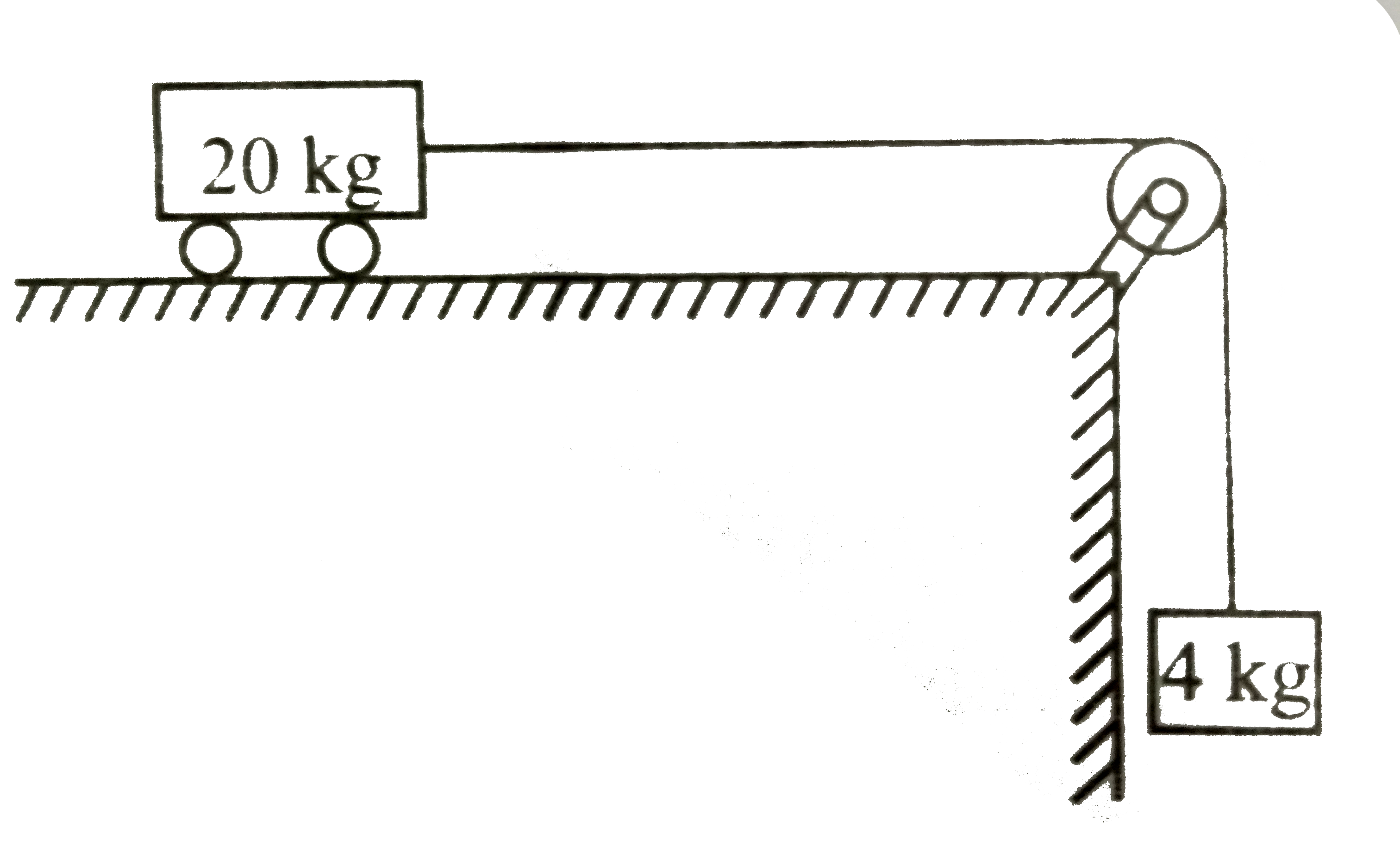A body of mass 2kg is resting on a rough horizontal surface. A force of 20N is now applied to it for 10s, parallel to the surface. If the coefficient of kinetic friction between the surfaces of contact is 0.2. Calculate
change in kinetic energy of the object in 10s. (Take g=10ms−2).
Step by step video & image solution for A body of mass 2kg is resting on a rough horizontal surface. A force of 20N is now applied to it for 10s, parallel to the surface. If the coefficient of kinetic friction between the surfaces of contact is 0.2. Calculate change in kinetic energy of the object in 10s. (Take g=10ms^(-2)). by Physics experts to help you in doubts & scoring excellent marks in Class 11 exams.
Updated on:21/07/2023Topper's Solved these Questions
Similar Questions
A body of mass 2kg is resting on rough horizontal surface. A force 20N is applied to it for 10s parallel to the surface. If coefficient of kinetic friction between the surfaces in contact in 0.2. Caluculate (i) work done by applied force in 10s. (ii) change in KE of object in 10s.
Take g=10m/s2
View SolutionA block of mass m = 2kg is accelerating by a force F = 20N applied on a smooth light pulley as shown in the figure. If the coefficient of kinetic friction between the block and the surface is μ=0.3, find its acceleration.

View Solution
Knowledge Check
A block of mass 4 kg is resting on a horizontal table and a force of 10 N is applied on it in the horizontal direction. The coefficient of kinetic friction between the block and the table is 0.1. The work done in √20 s
ABy the applied force is 150 JBBy the frictional force is 60 JCBy the applied force and the net force are 150 J and 90 J respectivelyDAll are correctA block of mass 5kg is on a rough horizontal surface and is at rest. Now a force of 24 N is imparted to it with negligible impulse. If the coefficient of kinetic friction is 0.4 and g=9.8m/s2 , then the acceleration of the block is
A0.26m/s2B0.39m/s2C0.69m/s2D0.88m/s2A horizontal force of 129.4 N is applied on a 10 kg block which rests on a horizontal surface. If the coefficient of friction is 0.3, the acceleration should be
A9.8m/s2B10m/s2C12.6m/s2D19.6ms2
A body of mass 20 kg is moving on a rough horizxontal plane. A block of mass 3 kg is connected to the 20 kg mass by a string of negligible mass through a smooth pulley as shown in the figure. The coefficient of kinetic friction between the heavier mass and teh surface is
(g=10m/s2).

View SolutionA force of 100N is applied on a block of mass 3 kg as shown in the figure-2.164. The coefficient of friction between the surface and the block is 0.25.The frictional force acting on the block is: (Take g=10ms2)

View SolutionA block of mass 10 kg is placed on the rough horizontal surface. A pulling force F is acting on the block which makes an angle θ above the horizontal. If coefficient of friction between block and surface is 43 then minimum value of force required to just move the block is (g=10ms2)
View SolutionA block of mass 20 kg is placed on a rough horizontal surface. When a force of 80 N is applied at an angle of 30°with the horizontal, the block just begins to slide. What is the coefficient of static friction ? (g=10m/s2)
View SolutionA trolley of mass 20 kg is attached to a block of mass 4kg by massless string passing over a frictionless pulley as shown in the figure. If the coefficient of kinetic friction between trolley and the surface is 0.02, then the acceleration of the trolley and block system is (Takeg=10ms−2)

View Solution

